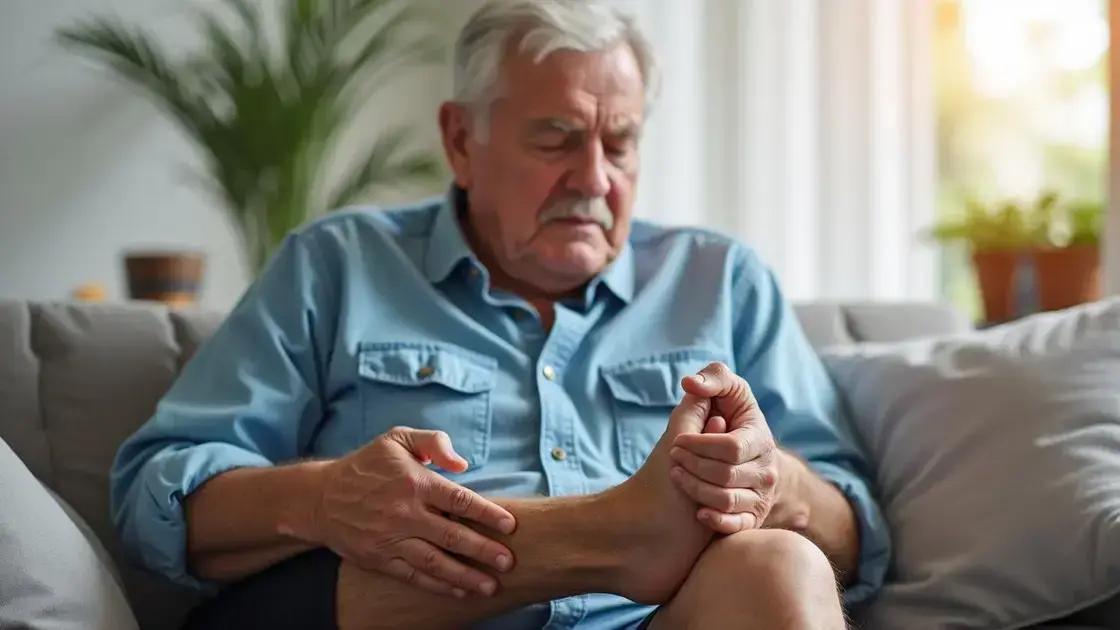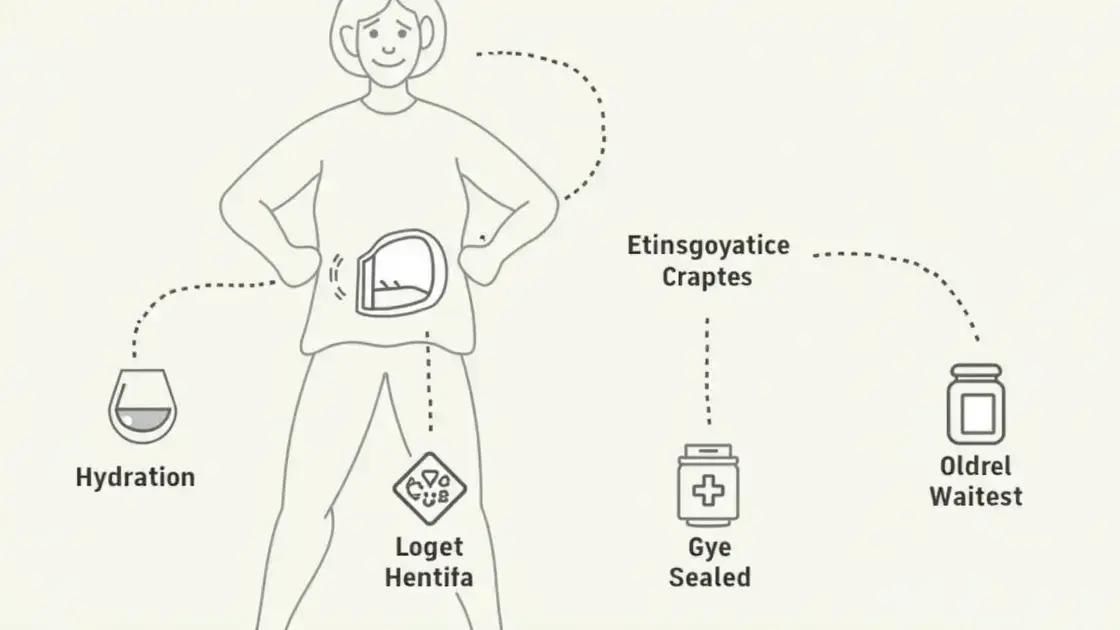To prevent age-related muscle cramps, stay well-hydrated, maintain a balanced diet rich in electrolytes, stretch regularly, and balance physical activity. Seek medical advice if cramps are frequent, severe, or accompanied by other symptoms.
Are frequent muscle cramps troubling you as you age? You’re not alone. Understanding how to prevent age-related muscle cramps can significantly enhance your quality of life. In this guide, we will cover essential insights about muscle cramps, including their causes and effective prevention strategies. With the right knowledge, you can combat cramps and improve your mobility. Let’s dive into practical solutions you can apply today.
Understanding Age-Related Muscle Cramps

As we age, our bodies undergo many changes, increasing the likelihood of experiencing age-related muscle cramps. These cramps are involuntary contractions of muscles, often occurring in the legs, arms, or back. Understanding these cramps is crucial to managing and preventing them effectively.
What Are Muscle Cramps?
Muscle cramps are sudden and painful contractions that may last for a few seconds to several minutes. They can happen anytime, often during physical activity or at rest, especially at night.
Why Do They Happen as We Age?
As we age, muscle fibers lose elasticity and strength. Additionally, the body may have a lower tolerance for dehydration, electrolyte imbalances, and the effects of various medications that can trigger cramps.
Common Symptoms
People experiencing age-related muscle cramps often report:
- Sudden, sharp pain in a muscle
- Stiffness in the affected area
- Visible tightness or hardening of the muscle
- Discomfort that lingers after the cramp subsides
Potential Complications
If left unmanaged, frequent muscle cramps can lead to longer-term complications, including decreased mobility, muscle strains, and even sleep disturbances. Understanding the symptoms and why they occur can aid in proactive management.
Common Causes and Risk Factors

Understanding the common causes of age-related muscle cramps is essential for preventing them. There are various factors that can contribute to the occurrence of these cramps, especially as we get older.
Dehydration
One major cause is dehydration. As we age, our bodies may not retain water as effectively, leading to a higher risk of cramps. Staying hydrated is crucial for muscle function.
Electrolyte Imbalance
Electrolytes like potassium, calcium, and sodium play a significant role in muscle contractions. An imbalance in these minerals, often due to poor diet or excessive sweating, can lead to cramps.
Medications
Some medications can also be a risk factor. Diuretics and statins, for example, may contribute to muscle cramps by affecting fluid balance or muscle health. Always consult your doctor if you notice a pattern related to medication use.
Underlying Health Conditions
Certain health conditions, such as diabetes or thyroid disorders, can increase the chances of experiencing muscle cramps. Regular check-ups with your healthcare provider are essential for managing these conditions effectively.
Physical Activity
Engaging in too much or very little physical activity can also lead to cramps. Overexertion during exercise or sedentary lifestyles can both contribute to this issue. It’s vital to find a balanced routine that fits your body’s needs.
Effective Prevention Strategies

Preventing age-related muscle cramps is possible with effective strategies that promote muscle health. Here are some actionable tips to incorporate into your daily routine.
Stay Hydrated
Drinking enough water is essential. Aim for at least 8 glasses a day. If you exercise or spend time outdoors, consider increasing your fluid intake.
Maintain a Balanced Diet
Consume a diet rich in fruits, vegetables, and whole grains. Foods high in electrolytes like bananas, oranges, and leafy greens can help maintain muscle function.
Stretch Regularly
Incorporate daily stretching into your routine. Gentle stretches for your legs, arms, and back can improve flexibility and reduce cramping. Focus on stretches that target major muscle groups.
Adjust Physical Activity
Balance your physical activity. Avoid sudden increases in exercise intensity. Instead, gradually build your strength and endurance to prevent overexertion.
Practice Relaxation Techniques
Stress can contribute to muscle tension. Techniques like yoga, deep breathing, and meditation can help relax your body and reduce the risk of cramps.
Consult with a Doctor
If you experience frequent cramps, talk to your healthcare provider. They can evaluate your health and suggest specific changes or treatments suited to you.
When to Seek Medical Advice

Knowing when to seek medical advice is vital if you experience muscle cramps as you age. While occasional cramps can be normal, certain signs may indicate a need for professional evaluation.
Frequent or Severe Cramps
If you find yourself experiencing cramps frequently or if the pain is intense, it is crucial to consult a doctor. Persistent cramps may signal an underlying health issue.
Accompanied by Other Symptoms
Seek medical attention if your cramps are accompanied by swelling, redness, or warmth in the affected area. This may indicate a blood clot or another serious condition.
Changes in Muscle Strength
If you notice a sudden weakness or changes in your muscle strength along with cramps, this could be a sign of nerve or muscle disorders. Don’t hesitate to get checked out.
Impact on Daily Activities
When cramps interfere with your daily life, such as affecting your ability to walk, exercise, or sleep, it’s important to reach out to a healthcare provider for guidance.
Underlying Medical Conditions
If you have existing conditions like diabetes, kidney disorders, or thyroid issues, regular check-ups become even more critical. Cramps may signify that your condition needs closer attention.
In Summary: Managing Age-Related Muscle Cramps
Understanding how to prevent age-related muscle cramps is essential for maintaining a healthy and active lifestyle as you get older. Staying hydrated, maintaining a balanced diet, and incorporating regular stretching can significantly reduce the occurrence of cramps.
Recognizing common causes and risk factors, such as dehydration and medication side effects, helps you to be proactive in your prevention efforts. If cramps become frequent or severe, or if they are accompanied by other concerning symptoms, don’t hesitate to seek medical advice.
With the right strategies and awareness, you can effectively manage muscle cramps and enhance your overall quality of life.
FAQ – Frequently Asked Questions About Preventing Age-Related Muscle Cramps
What are age-related muscle cramps?
Age-related muscle cramps are involuntary contractions that occur more frequently as we age, often causing pain in various muscle groups.
What causes muscle cramps in older adults?
Muscle cramps can be caused by dehydration, electrolyte imbalances, certain medications, and underlying health conditions.
How can I prevent muscle cramps?
To prevent muscle cramps, stay hydrated, maintain a balanced diet rich in electrolytes, stretch regularly, and engage in moderate physical activity.
When should I seek medical advice for muscle cramps?
Seek medical advice if you experience frequent or severe cramps, if they are accompanied by other symptoms, or if they impact your daily activities.
What role does hydration play in preventing muscle cramps?
Staying hydrated is essential as dehydration can lead to muscle stiffness and cramps. Aim for at least 8 glasses of water per day.
Are there specific foods I should eat to prevent cramps?
Yes, foods high in potassium, calcium, and magnesium, such as bananas, leafy greens, and dairy, can help maintain muscle function and prevent cramps.












